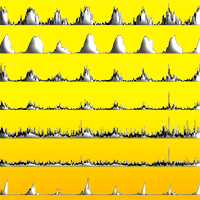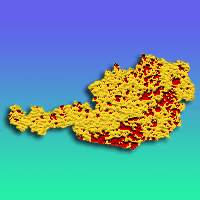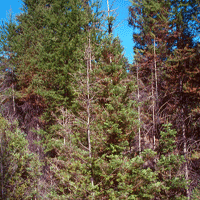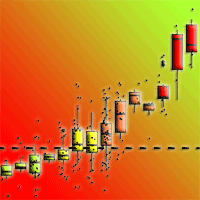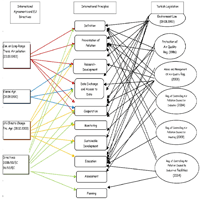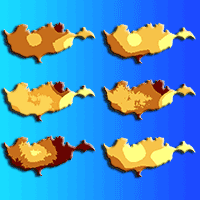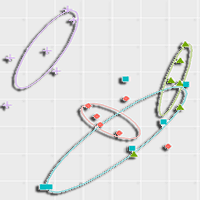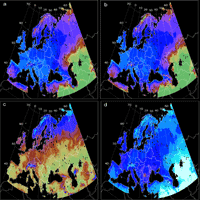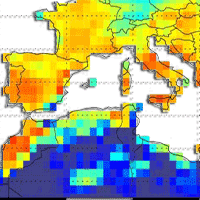
Comparison of fire danger indices in the Mediterranean for present day conditions
C Giannakopoulos (1) , P LeSager (2), M Moriondo (3), M Bindi (4), A Karali (1), M Hatzaki (1), E Kostopoulou (5)
iForest - Biogeosciences and Forestry, Volume 5, Issue 4, Pages 197-203 (2012)
doi: https://doi.org/10.3832/ifor0622-005
Published: Aug 02, 2012 - Copyright © 2012 SISEF
Technical Reports
Abstract
This paper assesses the ability of two forest fire danger indices to estimate fire danger and to define the beginning and the end of fire season. Two indices are studied: the Canadian Fire Weather Index (FWI) and the Finnish Forest Fire Index (FFI). The indices are designed to meet the needs of particular regions but they have also proved to be suitable for the Mediterranean region. The aim of this study is to assess the skill performance of both indices and identify their strengths and weaknesses. The Canadian FWI depends on temperature, precipitation, relative humidity and wind measurements, while the Finnish FFI relies on potential evaporation and precipitation. Results indicate that, in general, FWI and FFI determine a fairly similar fire danger for a set of weather conditions. Higher correlations are found especially for locations under significant fire danger. The results improve for the lower values of fire danger if a spin up period is used in the computation of FFI. Both indices show similar features especially during summer, but some deviations are typical during early spring and autumn, as FWI probably overestimates the fire danger.
Keywords
Authors’ Info
Authors’ address
A Karali
M Hatzaki
Institute for Environmental Research and Sustainable Development, National Observatory of Athens, I. Metaxa & V. Pavlou, GR-15236 Palaia Pendeli, Athens (Greece)
Chemistry and Climate Division, Royal Netherlands Meteorological Institute- KNMI, Wilhelminalaan 10, NL-3732 GK De Bilt (The Netherlands)
Institute of Biometeorology of Florence, National Research Council, v. Caproni 8, I-50145 Florence (Italy)
DiPSA-Department of Plant, Soil and Environmental Science, University of Florence, p.le delle Cascine 18, I-50144 Florence (Italy)
Department of Geography, University of the Aegean, University Hill, GR-81100 Mytilene (Greece)
Corresponding author
Paper Info
Citation
Giannakopoulos C, LeSager P, Moriondo M, Bindi M, Karali A, Hatzaki M, Kostopoulou E (2012). Comparison of fire danger indices in the Mediterranean for present day conditions. iForest 5: 197-203. - doi: 10.3832/ifor0622-005
Academic Editor
Agostino Ferrara
Paper history
Received: Jan 25, 2012
Accepted: Jun 19, 2012
First online: Aug 02, 2012
Publication Date: Aug 29, 2012
Publication Time: 1.47 months
Copyright Information
© SISEF - The Italian Society of Silviculture and Forest Ecology 2012
Open Access
This article is distributed under the terms of the Creative Commons Attribution-Non Commercial 4.0 International (https://creativecommons.org/licenses/by-nc/4.0/), which permits unrestricted use, distribution, and reproduction in any medium, provided you give appropriate credit to the original author(s) and the source, provide a link to the Creative Commons license, and indicate if changes were made.
Web Metrics
Breakdown by View Type
Article Usage
Total Article Views: 55355
(from publication date up to now)
Breakdown by View Type
HTML Page Views: 45934
Abstract Page Views: 3579
PDF Downloads: 4417
Citation/Reference Downloads: 26
XML Downloads: 1399
Web Metrics
Days since publication: 4880
Overall contacts: 55355
Avg. contacts per week: 79.40
Citation Metrics
Article Citations
Article citations are based on data periodically collected from the Clarivate Web of Science web site
(last update: Mar 2025)
Total number of cites (since 2012): 13
Average cites per year: 0.93
Publication Metrics
by Dimensions ©
Articles citing this article
List of the papers citing this article based on CrossRef Cited-by.
References
Evaluation of two fire danger rating methods in the boreal forest environment (Finland). Boreal Environmental Research (Submitted).
Gscholar
The Finnish forest fire index calculation system. In: “Early warning systems for natural disaster reduction” (Zschau J & Kuppers A eds). Springer, Berlin, Germany, pp. 645-648.
Gscholar

